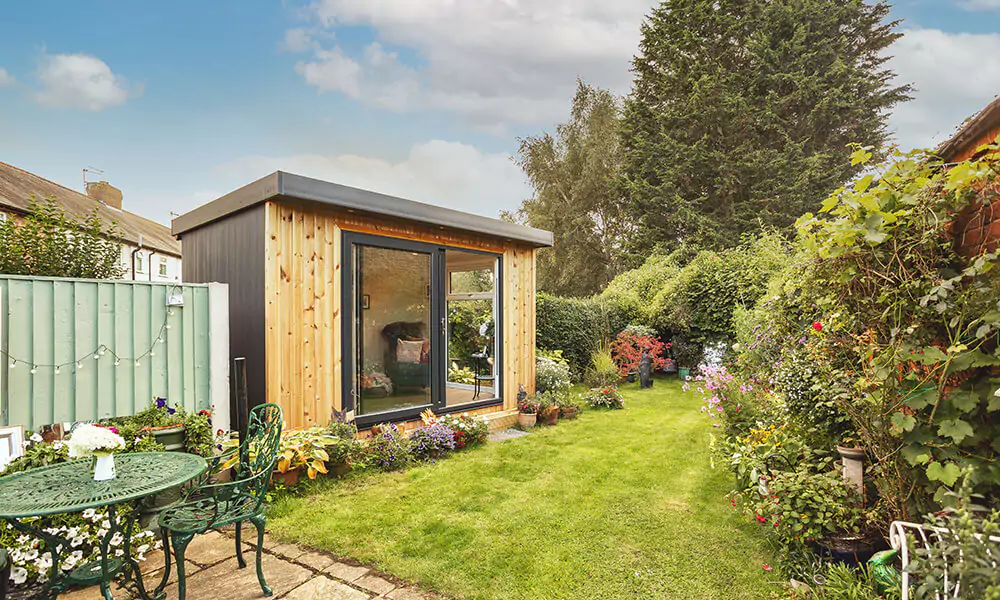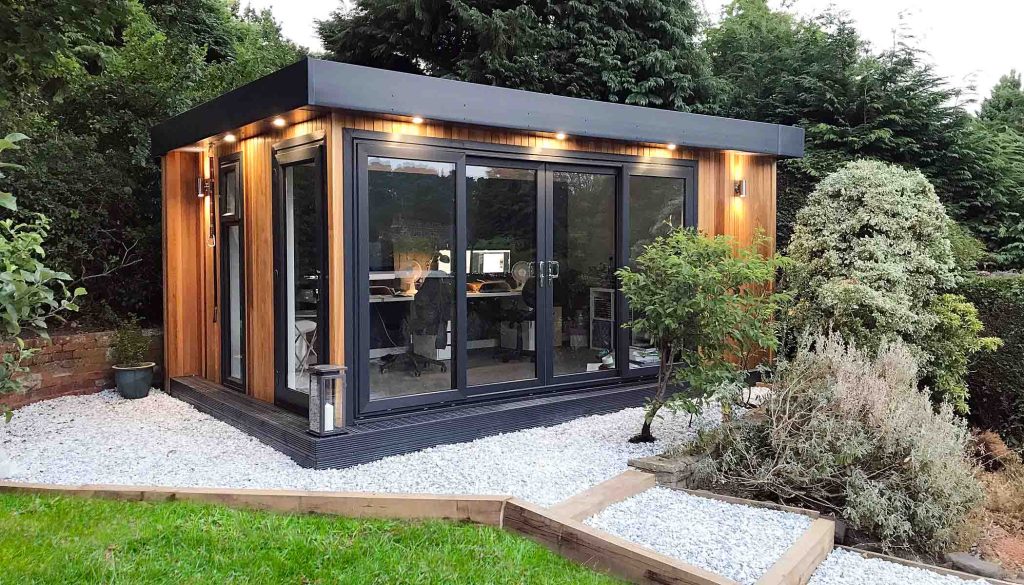Good Ideas For Planning Permission For Garden Rooms
Good Ideas For Planning Permission For Garden Rooms
Blog Article
In Conservation Areas, What Approvals Do You Require For Garden Rooms As Well As Other Structures?
In conservation areas, there are certain limitations to preserve the character and look of these areas. Planning permits are required for conservation areas. Here are some key considerations.
Planning permission is required for any extension or building that falls under the permitted development rights within a conservation zone. Garden rooms, sheds or other outbuildings are included.
Size and Scale:
Planning permission may be required for any structure, regardless of size if it affects the nature of a conservation area. There are stricter controls over the dimensions and scale of new buildings or extensions when compared with non-designated areas.
Location on the property
The chance of a home that requires planning permission rises in the event that the structure or extension is located on the side, front, or rear. If rear structures are seen in public spaces or alter the area's character, they may require permission for planning.
Materials and Design:
The selection of material and design is vital in conservation areas. The materials that are used in any new construction or extension should be compatible with the architectural or historic interest of the surrounding area. These criteria will require permission for planning.
Demolition:
Planning permission is generally required in conservation zones to make sure that the changes are in line with an area's distinctive nature.
Height Restrictions
In conservation areas, there are higher height restrictions in conservation areas. Anything that is more than 2.5 meters high (especially less than 2 meters from the boundary) will likely require planning permission.
The Effects on the Surrounding Environment:
Planning permission might be required in the event that a proposed structure extension, addition or change to the appearance or setting of the conservation zone could negatively impact the appearance of the area and its surroundings.
The use of the building
A garden room, an outbuilding or studio could not require planning permission if the use is allowed.
Changes and expansions
Extensions that are larger than the specified size or volume limits or change the exterior appearance of the building, will generally require approval for planning. This includes conservatories as in other significant changes.
Curtilage Structures:
Conservation areas require the approval of the planning department for all structures in the curtilage. This applies to new extensions, outbuildings, or changes.
Trees that are protected:
The trees in conservation zones are typically protected. If the proposed development will affect any trees, you could need additional permissions, including the tree works consent, along with the permission to plan.
Local Authority Guidelines
Local planning authorities will set rules and regulations that are specific to each conservation zone. These rules can be tailored to meet the specific nature and character of each region.
In short Planning permission for conservation zones requires a detailed evaluation of how proposed garden rooms, conservatories, outhouses, garden offices, or extensions could affect the architectural and historical characteristics of the area. To ensure that your project meets all relevant laws, it is essential to speak with local authorities before beginning the planning process. View the recommended out house building for site recommendations including small garden office, what size garden room without planning permission, luxury outhouse, insulated garden buildings, out house for garden, costco outhouse, luxury outhouse, outhouse building, outhouse builders, outhouses for garden and more.
What Kind Of Planning Permission Is Needed For Gardens, Rooms, Etc. In Relation To Neighbourhood Concerns?
If you are planning to construct garden offices, conservatories outhouses, or garden offices, the concerns from your neighbors will decide whether you need planning permission. Two important considerations: Overlooking and privacy:
Planning permission is normally required when the new construction could overlook neighboring properties, and may cause privacy issues. The new building should not impact the residents' living arrangements.
Loss of Light, Overshadowing
A permit for planning is generally required when a building is likely to cause significant loss of light or shadowing of nearby homes. The local planning authority will be able to determine the effect of the proposed development on sunlight and daylight in the adjacent property.
Disturbance and Noise:
The planning permission is required if a garden area or extension is planned to be used for noise-producing activities (such as guests visiting your office at home or a music studio, an office, etc.). It will make sure that the level of noise is not excessive and do not disturb neighbors.
Character and Visual Impact
The design, appearance and the size of the new structure must be in keeping with the neighborhood's character. Planning permission ensures the development is appealing to the eye and does not interfere with the aesthetics of the neighborhood.
Boundary proximity:
Constructions that are built near the boundary of the property could require permission to plan, particularly when they're higher than 2.5 meters within 2 meters of the boundary. This is in order to settle any disputes or impact on adjacent properties.
Shared Access Rights of Way and Rights of Way
If the construction affects rights of access or shared access points, planning permission is necessary to ensure that they aren't obstructed or affected.
Refusals from Neighbors:
Residents in the immediate vicinity have the right to speak with neighbors on applications for planning. If there is opposition from neighbors, the authority for planning will take into account the concerns of neighbors when deciding whether to approve the application.
Effect on the value of property
Although it's not always an issue of primary importance, changes that could affect the property value of adjacent homes can have an influence on the need to obtain permission to plan. These impacts will be considered by the local authorities in making their decision.
Covenants and Deed Restrictions:
If you have a deed restriction or covenant on your property, it might require that you comply with these, regardless whether planning permission has been granted. These legal agreements can define what may and cannot be constructed, which can affect neighborhood harmony.
Construction Disturbance:
The planning permission may deal with the issues of disturbances that may occur during the construction phase such as noise and dust. It could be necessary to set up conditions to limit the impact on neighboring properties.
Infrastructure Impact:
If the construction puts additional strain on local infrastructure (e.g., drainage or parking, roads, etc.) Planning permission will ensure that the impacts are analyzed and managed appropriately.
Community Consultation:
In certain situations the need for a larger community consultation may be needed especially in relation to more controversial or large-scale developments. This will allow for an more democratic process of decision-making, taking into account the views of the local community.
In the end, neighborhood concerns play an important role in the process of obtaining planning permission for conservatories, garden rooms outhouses, gardens offices, or extensions. Ensuring that the proposed development does not alter the living space, lighting, privacy, noise levels, or overall quality of the area is crucial. Consultation with the local planner and engaging with neighbors early in the process of planning can help to resolve these issues and help facilitate an easier approval. Check out the top rated composite outbuildings for more advice including garden out house, insulated garden buildings, composite garden office, composite garden office, garden office, garden room, garden room permitted development, garden room conservatory, best electric heater for cabin, outhouse buildings and more.
What Permission Do I Need To Use My Garden, Etc. With Regard To Agricultural Lands
There are some restrictions and requirements for planning permission when building conservatories, outhouses or gardens offices on land used for agriculture. Here are some important aspects.
Land classified as agricultural land is typically used for agriculture or other related activities. The conversion of the land to gardens or residential structures typically requires planning permission. This is because it's a change from the original agricultural use.
Permitted Development Rights:
Agricultural and residential land have different permitted developments. Some agricultural structures are, for example, able to be constructed without a full planning permit. However, they tend to be for structures that are related to farming that are not garden rooms or offices for residential use.
Size and Scale
The scale and size of the building will determine if planning permission is needed. Larger structures or cover a large area of land will be more likely to require permission.
The impact on the use of agriculture:
Planning permission is likely to be required if the proposed construction hinders the agricultural uses of the land. This could include reducing available space for livestock and crop production.
Green Belt Land:
If agricultural land is classified as Green Belt, additional restrictions are in place to limit urban sprawl. Every new structure or construction built upon Green Belt Land is required to get planning permission and satisfy certain standards.
Design and Appearance
The appearance and design of the building must be in line with the rural character of the region. The building must not have an adverse impact on the surrounding landscape.
Environmental Impact:
Construction on agricultural lands must be considered in relation to the natural environment. A study of the environment may be required for planning approval to ensure that the new structure won't harm wildlife habitats or local ecosystems.
Proximity to Existing Buildings:
The proximity of the garden room or office to existing agricultural buildings can impact the requirements for planning. Buildings constructed near farm buildings will be treated differently from the ones on open fields.
Access to infrastructure
Consideration should be given to the impact of the proposed building on existing infrastructure, such as roads, waste management, and water supply. If you are applying for planning permission the city will assess whether the infrastructure can support the proposed building.
Class order:
Planning law has defined specific classes of land use. The change of the use class to accommodate buildings that are not agricultural requires planning permission to ensure the new use complies with local planning policies.
Local Planning Policies:
Local planning authorities have specific policies pertaining to agricultural land. These policies help to determine whether planning permits are granted to non-agricultural constructions and will take into consideration elements like local development plans or the needs of the community.
National Planning Policy Framework
The National Planning Policy Framework in the UK provides guidelines for how land can be developed and be used. Permission to build structures on agricultural land will be evaluated in light of the NPPF, which emphasizes sustainable development and preservation of rural areas.
In essence it is needed for the construction of greenhouses, gardens, garden rooms outhouses, extension of garden offices on agricultural land. The permit is required in order to make sure that uses of land are changed and to comply with the local and national guidelines. Contacting the local authority for planning is vital to identify the requirements specific to your area and receive the required approvals. Take a look at the top kitchen garden room extension for site recommendations including garden out house, ground screws vs concrete, garden buildings , garden rooms in St Albans, how to get power to a garden room, what size garden room without planning permission, how to get power to a garden room, what size garden room without planning permission, garden rooms in St Albans, costco garden buildings and more.